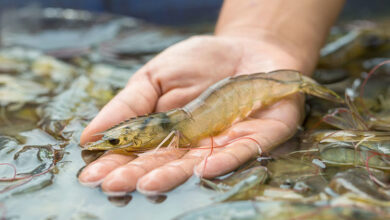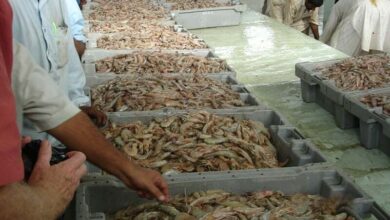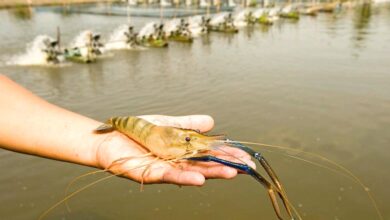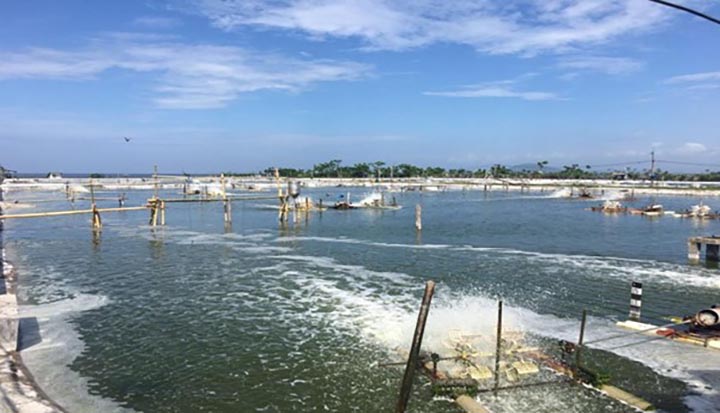
The Indonesian government has set a goal of producing 2 million metric tons (MT) of shrimp by 2024. However, several industry experts are concerned about the plausibility of this target.
This is not the first time the Indonesian government and other industry stakeholders have predicted or announced such ambitious growth. In March 2020, the Indonesian government also set the target of massively increasing the country’s shrimp export revenues by 250% by 2024. But, shrimp industry specialists then doubted the government’s proposal and called it an impossible target.
This time, however, the government is very optimistic about meeting the goals. Sakti Wahyu Trenggono, the Minister of Marine Affairs and Fisheries of Indonesia, assured local legislators in December 2022 that he is optimistic Indonesia will meet its 2024 shrimp output target.
Indonesia was the world’s third-largest aquaculture producer by volume in 2020, following China and India, with shrimp accounting for the majority of production. Indonesia possesses numerous advantages over its competitors. The Indonesian archipelago consists of 18,000 islands and islets and has the third-most coastlines of any country. The vast coastline provides extra benefits for the farmers.
Indonesia’s fishery and marine goods exports generated roughly USD 6.2 billion (EUR 5.8 billion) in 2022, and it aims to reach USD 7.6 billion (EUR 7.1 billion) in 2023.
In 2021, shrimp accounted for USD 2.2 billion (EUR 2 billion), making it Indonesia’s most valuable seafood export.
Indonesia has 247,000 hectares devoted to shrimp ponds, and the average annual yield per hectare is presently 0.6 metric tons. According to Antara News, the Indonesian government wants to create 1,000 new hectares of modernized shrimp-farming ponds and enhance production by turning old ponds into semi-intensive or intensive ponds. This initiative will raise the output by 15 to 20 MT per hectare.
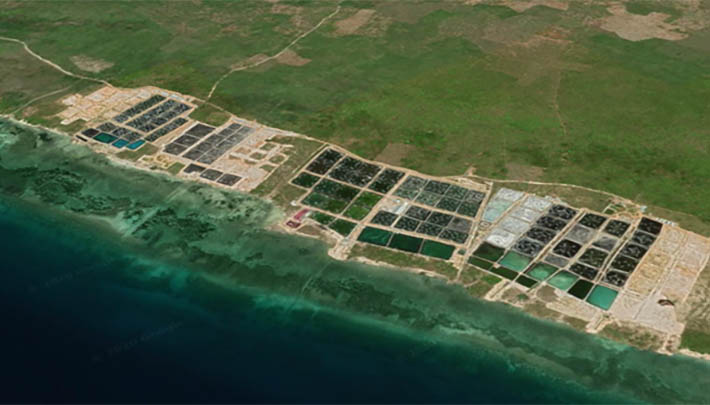
“Indonesia seems to have the necessary components to become the global leader in aquaculture and seafood production,” according to Guntur Mallarangeng, co-founder and chief executive officer of shrimp farm management firm Delos. “Whenever we figure out how to integrate them, we should be able to dominate the global shrimp industry,” he added.
Despite tremendous momentum, producing 2 million metric tons (MT) of shrimp by 2024 seems ambitious. And there are a few factors that should be taken into consideration.
The officials who announced the government’s ambitions also anticipated that the increase of intensive shrimp farming would be the primary driver of economic expansion. And the farmers stock more than 200 PL/m2 in ponds.
However, high stocking density inhibits shrimp growth, which results in shrimp below marketable size. Moreover, the shrimp industry in Indonesia is currently facing significant both domestic and global challenges.
Internally, the shrimp industry has numerous challenges, particularly in the production (farming) phase. These include disease infestation, lack of shrimp fry, shrimp feed and medicine, regional planning and infrastructure, and farmer empowerment. Externally, the present influx of comparatively ‘cheap’ imported shrimp into Indonesia has negatively impacted business profitability. These cheap imported shrimps have a high mortality rate and a low growth rate.
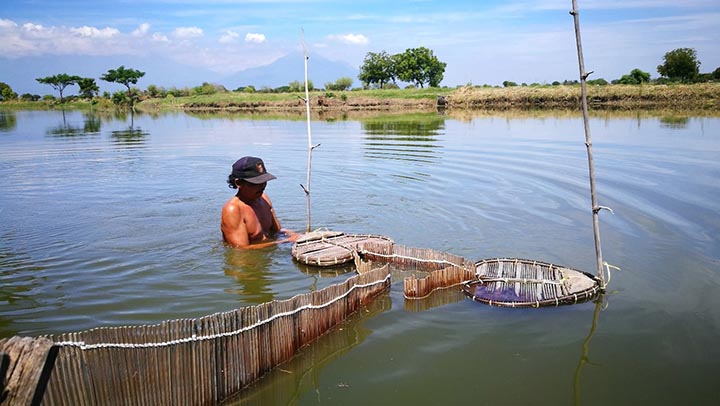
Moreover, Importers from Developed states apply stringent quality standards, which Indonesian shrimp farmers cannot meet. The primary demand from the importers includes the absence of antibiotic contamination in the shrimp. Yet, shrimp farmers utilize a substantial amount of antibiotics to counteract the effect of poor shrimp fry.
Additional issues include the low productivity and high production costs of domestic shrimp. This last issue complicates the management of trade policy.
If the production remains persistent with the rise of super-intensive shrimp farming, Indonesia could wind up dramatically expanding its output over the following couple of years. And it could be a more formidable competitor to other shrimp producers in the region.
Jaber Bin Abdul Bari
Department of Oceanography, NSTU

